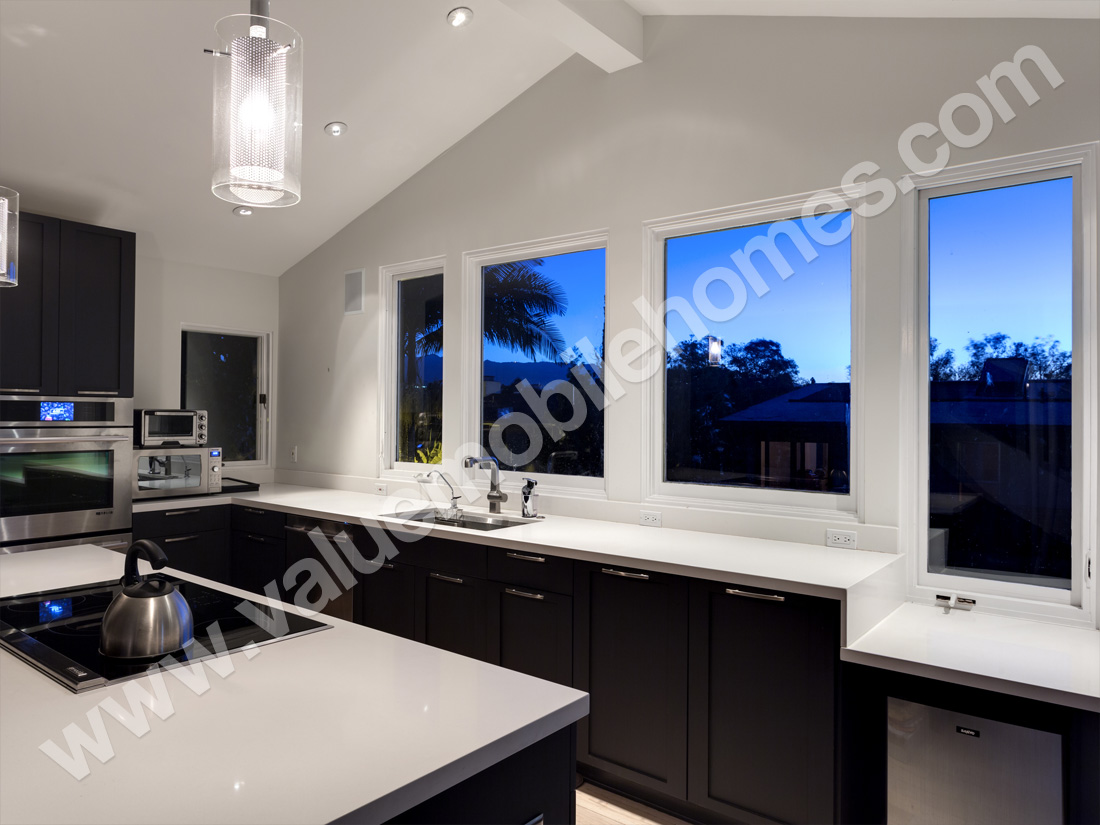Common Questions
- If I couldn’t drive a small car to my back garden, how would a massive 20 x 6 meter 5 bedroom mobile home be moved in and out?
Mobiles Homes can be assembled onsite from prefabricated panels and the mobility off-site and down a non-specific road is hypothetical.
This is best answered in ‘The Appeal Decision; Brightlingsea Haven Limited v. Morris 2008’ where it stated ‘It is the structure that must conform to the law not the means of access to where the structure actually is, and whether it may have difficulty in reaching a road.
It is now common practice to build or assemble caravans in hard to access back gardens. The structure must remain movable and capable of transport down a hypothetical road, even if access to a road may require craning over buildings or complicated procedures. The structure need not have direct access to a road to be deemed a ‘caravan’. In terms of construction, Mobile Homes can be assembled onsite from many prefabricated pieces so long as they conform to the construction and mobility test. Other caravans like touring and static caravans need not meet the construction tests but must remain movable. For large mobile homes it is recommended a kit-form caravan is purchased from a specialist reputable manufacturer as opposed to building one independently.
- Why would I want to live in a Caravan? I’ve stayed in caravans at holiday parks; they look horrible and are freezing cold in the winter!
Many people think of mobile homes and static caravans as having substandard comfort, dreary designs and paper-thin walls. However, they are not all like this. Modern mobile homes can offer all the luxury of conventional residential living. They can be built to the same insulation values as a normal house and come in a variety of designs and styles.
- How big can a ‘caravan’ be?
Although the maximum size of a caravan is limited to 20 x 6.8m in the Caravan Sites Acts, it is still considerably large, with enough space for over five bedrooms, toilets, kitchen and living spaces. A caravan can be significantly larger than most buildings capable of obtaining planning approval as annexes.
- Why not just have outbuildings? Homeowners have rights to build outbuildings without planning permission. Why would I consider a Mobile Home?
Many homeowners are familiar with the ‘Permitted Development Right’ to have sheds and other outbuildings in a garden without the need for planning approval (The Town and Country Planning General Permitted Development Order 2008)?. However, the development rights for outbuildings don’t allow living accommodation and a structure with a kitchen and bathroom is not allowed.
- What’s the most common problem?
The main problem that occurs with the Local Authorities (if the boundary of the garden and compliance with the Caravans Sites Act is not in question) will be the argument that if the caravan has all the facilities for independent living it is therefor capable of being used as a separate dwelling and a separate planning unit will have been created. Consequently, the use of the land will have changed from a single dwelling or incidental to the enjoyment of the dwelling. However, this argument is not supported by Case Law. All caravans have the facilities for independent living by their very definition. There is no law that states that a caravan with full living facilities constitutes development. This applies more to buildings than caravans. One possibility to overcome this argument is to independently sign an ‘affidavit/statutory declaration’ stating that the use of the caravan will be not be as a separate dwelling.
- What about farmland? Can I put a caravan in a field?
The answer is yes, but you can’t use the caravan as accommodation. It must be used in association with the use of the land. On farm land the caravan must be used for farming activities, storage or a rest area required by health and safely for workers. It cannot be used residentially as living accommodation without approval because the ‘use’ of the land would have changed from agricultural to domestic and a ‘material change of use’ would have occurred. A mobile home can, however, be used as accommodation for a limited 28 days of the year. There is no clear wording within this law that states the caravan needs to be moved off-site when not inhabited.
- Should the Council be contacted?
You don’t have to contact the Council but it is recommended, especially in cases of large mobile homes. If all the circumstances are satisfied and Lawful, then you can get a letter of confirmation from the Council, either an informal reply to a letter or via an official Lawful Development Certificate, which involves completing the application documents, exampled in this book.
- Why not just apply for planning permission for an annexe?
Statistically there will be a high chance of refusal. When residential annexes are granted planning permission they are frequently smaller 1-2 bedroom buildings. Mobile homes can be 20 x 6.7 metres and have over 5 bedrooms, significantly larger than a building likely to be granted conventional planning approval. Additionally there is no restriction on style. Planning permission will often require that the style and finish is ‘in keeping’ with the area. Whilst, a mobile home can be finished to your preferred taste.
